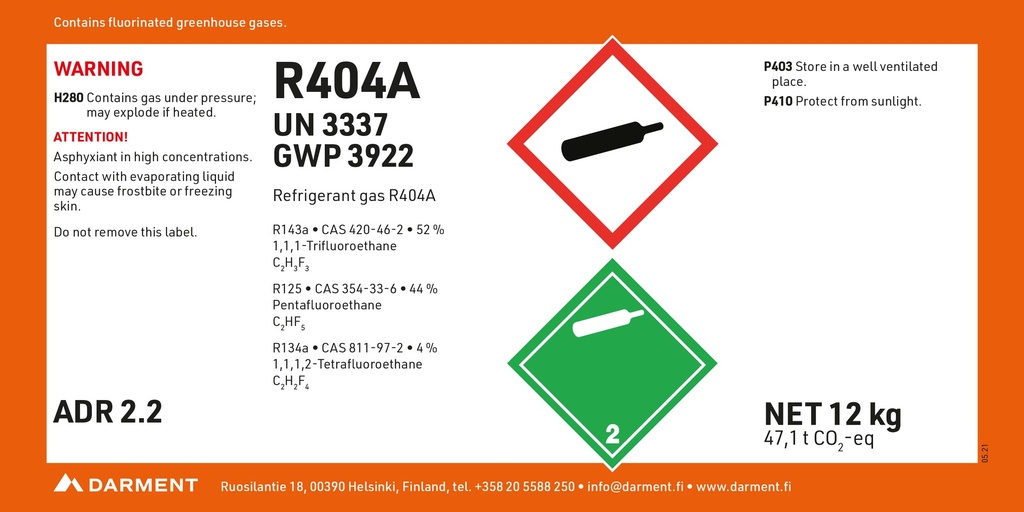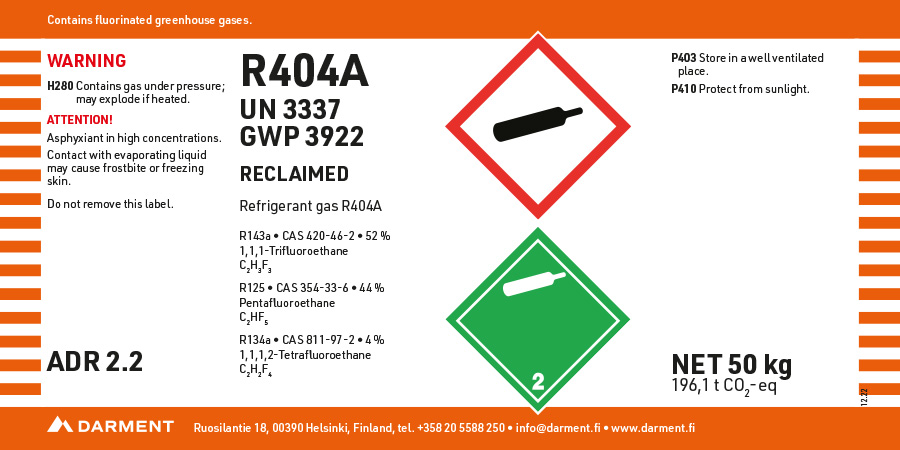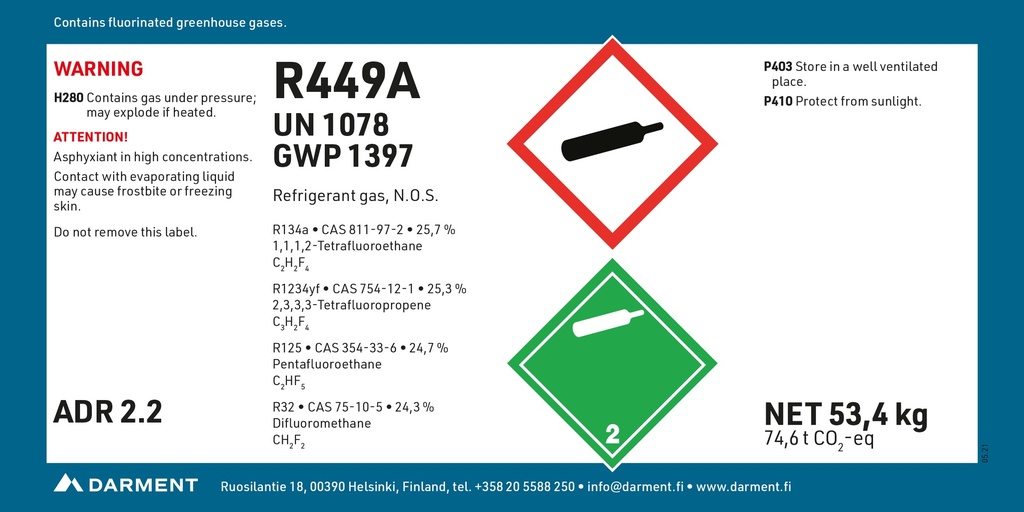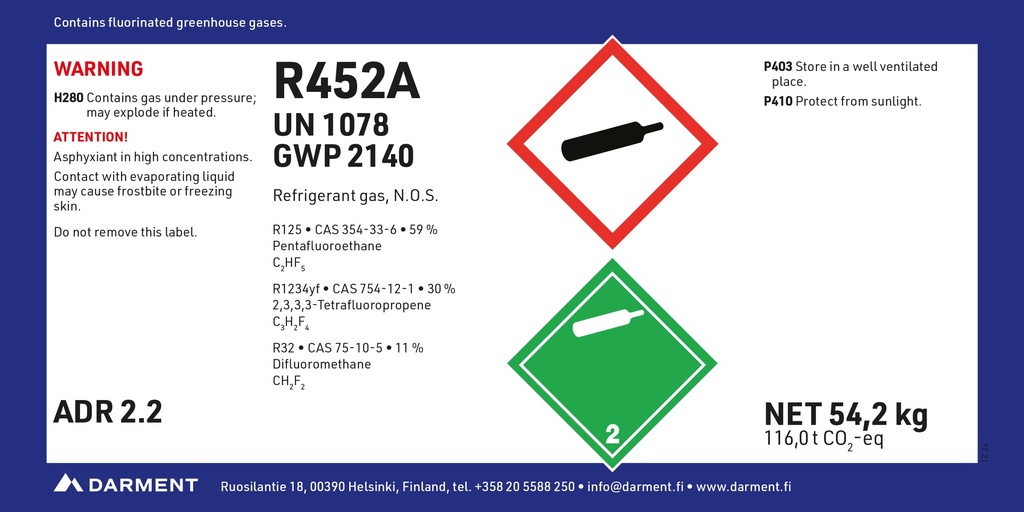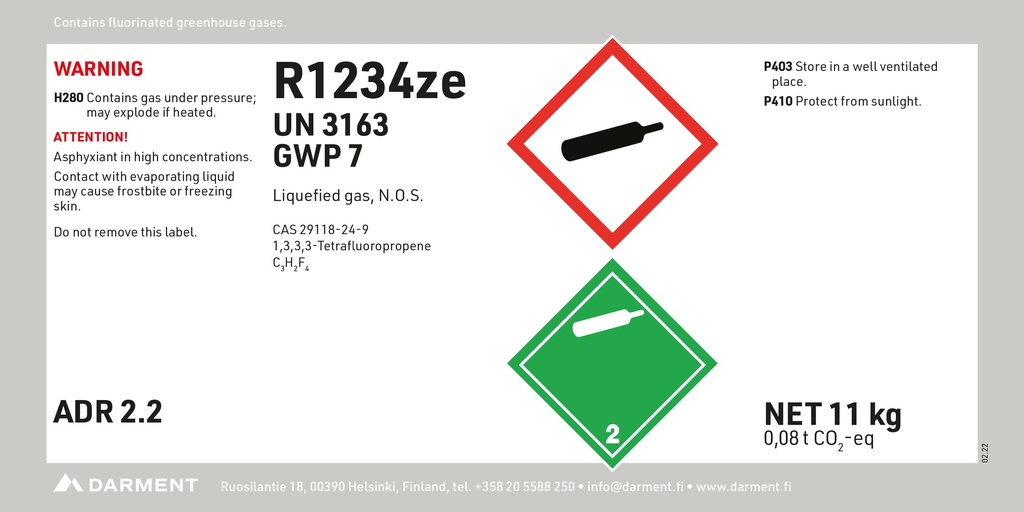
Synthetic refrigerants
HFC and HFO refrigerants
Understanding A1 and A2L safety class refrigerants
What are synthetic refrigerants?
Synthetic refrigerants are engineered compounds used in cooling and refrigeration systems as the working fluid. They are essential for reliable temperature control in commercial, industrial, and residential applications. A1 and A2L refrigerants belong to safety classes defined by their flammability and toxicity—A1 being non-flammable, and A2L mildly flammable but with lower environmental impact.
Thanks to their wide availability, high performance, and system compatibility, synthetic refrigerants remain a trusted and practical choice for many refrigeration professionals navigating evolving regulations and sustainability goals.
A1 refrigerants
A1 refrigerants belong to the category of substances with low toxicity (Class A) and no flammability (Class 1). They are widely used in air conditioning and refrigeration systems because they offer a high level of safety and do not require special flammability precautions. Well-known A1 refrigerants include R134a, R410A, and R404A. A downside of A1 refrigerants is their typically high Global Warming Potential (GWP), which has led to usage restrictions on many of them within the EU.
Darment selection of A1 Class Refrigerants (non-flammable, toxicity class A, safety group 1)
• R410A – Standard refrigerant for air conditioning and cooling
• R426A – Service refrigerant to replace R12
• R513A – Low-GWP alternative to R134a
• R454C – Alternative to R404A/R452A/R449A with reduced GWP
• R452A – Lower GWP alternative to R404A
• R407C – General-purpose refrigerant for air conditioning
• R449A – Successor to R404A, lower GWP
• R404A Reclaimed – a commonly used refrigerant, now limited to service use only
• R134a – Widely used in automotive and industrial applications, traditional refrigerant
A2L refrigerants
A2L refrigerants are also low in toxicity but are mildly flammable. This means they can ignite under certain conditions, but the risk is manageable with proper safety measures. A2L refrigerants are increasingly used as replacements for A1 substances due to their significantly lower GWP values. Examples include R32 and R1234yf. Because of their mild flammability, systems using A2L refrigerants must be designed and serviced with specific precautions, such as ensuring sufficient ventilation and avoiding ignition sources.
Darment selection of A2 Class Refrigerants (mildly flammable, A2L classification)
• R32 – For air conditioning and heat pumps, GWP 675
• R1234yf – Used in automotive air conditioning, ultra-low GWP




